Table of Contents
Whether you want to create custom designs or print artworks and eyes-catchy aesthetics onto various garments to pass a particular message or make the fabric look more attractive, you can achieve more with heat transfer method of printing.
This printing option is not only one of the easiest, but it is also an affordable option that you can turn to without incurring losses – unlike screen printing and other printing options. Little wonder why it is preferred among most T-shirt entrepreneurs out there.

However, before you rush out to choosing this printing option, there are various uses and lots of other information about heat transfer printing that you should know to achieve great results or decide if this method of printing is the right option for you.
Read on to find out!
What is Heat Printing?
Heat printing (also known as thermal transfer printing, heat transfer printing, and thermal printing) refers to the use of heat to transfer an image or design from heat-applied materials to other objects known as substrates.
The substrates are the base materials that the images or designs from the heat-applied materials will be printed onto to decorate them; these include t-shirts, bags, caps, plaques, awards and a host of others that can withstand the heat of the transfer.
Heat printing is one of the most affordable printing methods for fabrics, and it can be completed with a heat transfer equipment (iron or heat press).
The heat-applied materials come with adhesive on one side, which can only be activated by heat.
When you apply heat via your heat transfer equipment to the heat-applied material, it activates the adhesive which helps it to stick to the item (substrate) you want to decorate.
Heat Printing Application
The application of heat transfer printing is more pronounced in the garment decoration industry.
However, this easy and cost-effective printing method provides the opportunity to customize or decorate a wide range of items such as:
- T-shirts
- Bags
- Fanwear
- Jessy or team uniforms
- Caps
- Awards, etc.
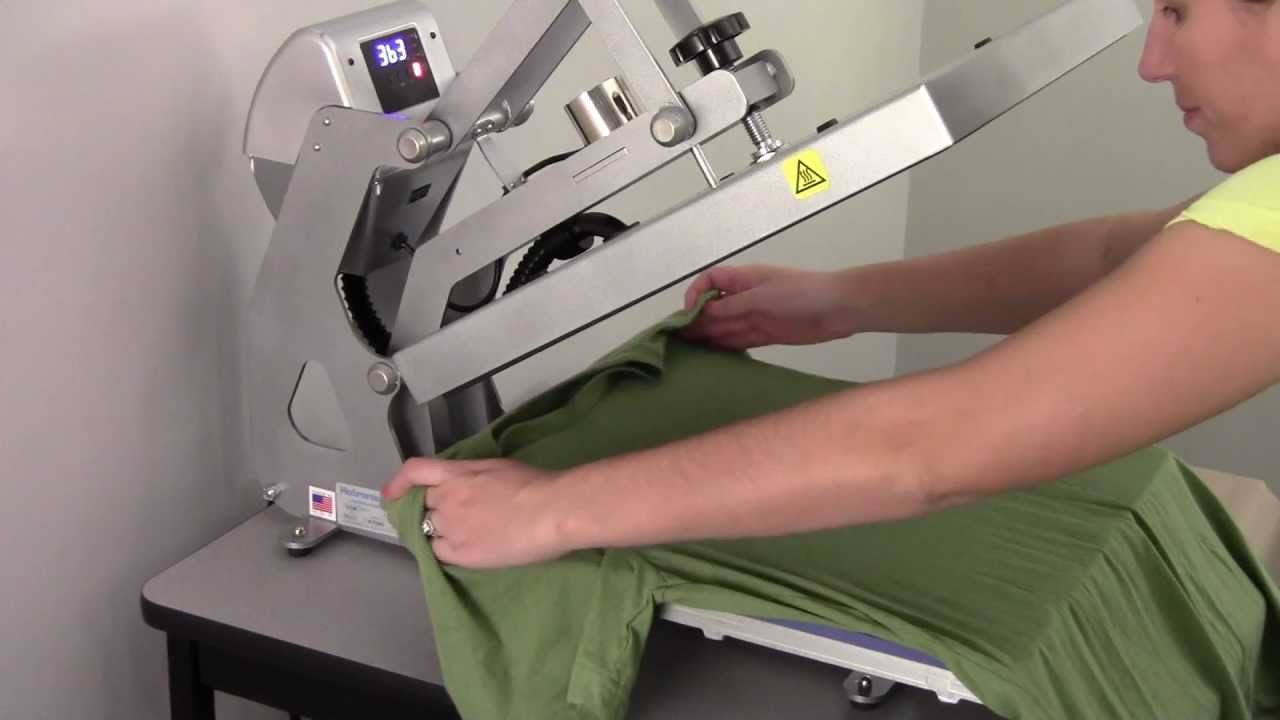

Since this printing method requires heat, it can only work on items that can withstand the heat of transfer. Most t-shirt materials can withstand the heat from this printing method.
However, it can damage some synthetic bags or materials, so you must ensure that the material (substrate) you want to decorate is resistant to heat before you apply this method of printing.
Heat transfer printing also provides the opportunity for clubs, schools, fashion, and craft enthusiasts, as well as corporate organizations and small businesses.
Apart from the suitability and application of this method of printing in the garment and textile decorating industry, it is also suitable for printing on acrylics and physically hard objects like plates and coffee mugs.
Factors Affecting the Quality of Heat Printed Items
Heat printed images are water-resistant, heat resistant, and durable.
However, as interesting as that may sound, achieving quality output through heat transfer method of printing is largely dependent on three factors; time, temperature and pressure.
Time – this is the duration in seconds the heat must be applied to the substrate.
Temperature – this is the ideal/optimum degree of heat at which the design/pattern will be perfectly imprinted on the substrate.
Pressure – this is the rate of force needed to be exerted when applying the heat on the substrate.
These factors are very germane as each heat transfer material has its unique heat printing requirements and guidelines; hence, to save the garments from been burnt, making recourse to the guidelines is strongly advised.
Some substrate requires special pre-treatment to achieve the best result. For instance, wool fabrics generally undergo a process of chlorination before printing, but most other textile materials require no special pre-treatment before heat printing.
However, it is recommended that you pre-wash and ensure the item you want to print on is clean before you proceed. That is because some textile materials will pull after heat printing as a result of the shrinkage around the printed area when they are washed for the first time.
You don’t have to worry about pre-washing if you are printing on other items such as a bag, because it will have no problem with shrinkage.
Types of Heat Transfers
In time past, heat transfer printing is limited to the use of heavy plastic film affixed to a garment as a cheap alternative to screen printing.
The final output has a glittering surface and a rubbery feel but couldn’t stand the test of time as it easily peels off due to regular laundry.
Traveling forward in time, heat transfer has drastically evolved which are categorized majorly as ink or material -based heat transfer.
1 – Material Based Transfer
Material Heat Based Transfer
These are physical material or film (such as vinyl, twill numbers, and letters and fabrics) with a heat-activated adhesive backing that is affixed permanently to a surface with the use of a heat press machine.


Most of the designs on athletic uniforms, sports jerseys, non-apparel surfaces (signs and wall panels) are done with material heat-based transfer.
At the inception of this type of heat transfer, rigid materials were used in its creation – which is not ideal for apparel as the transfer material does not stretch with garment during normal use or laundering, thereby causing it to peel off gradually over time.
But with the advent of material technology, stretchy transfer materials are now used for stretchy garment. You can choose to outsource the production of the designs on the material and heat press it at home or create the transfer yourself with the media on your computer, graphic software, a cutter, and heat press machine.
Print-Cut Transfer
This is another type of material-based transfer and is also known as ‘opaque transfer.’ It involves both printing and cutting which can be done either separately or simultaneously.
Separately, an image is printed onto the transfer material, cut and then the transfer material is affixed to the substrate using a heat press.
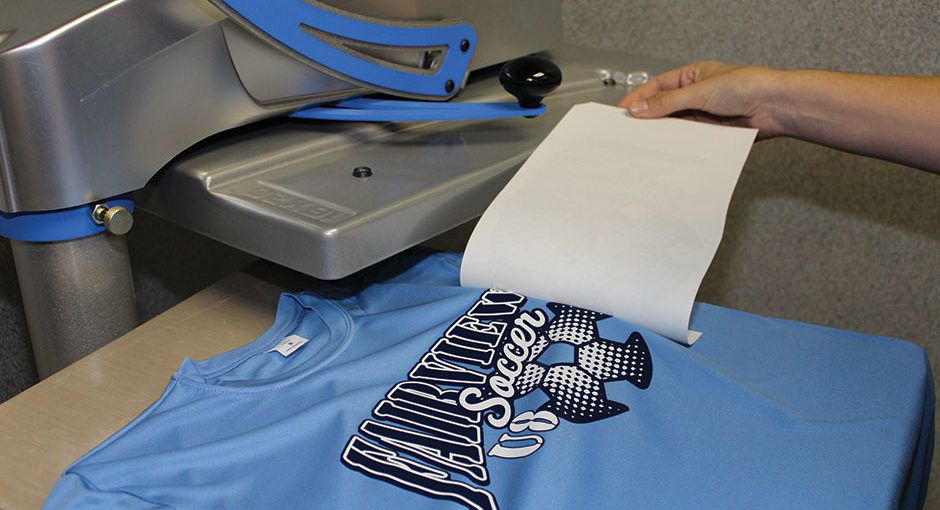

On the other hand, it could be done in a one-time operation through dual print-cut equipment that performs the printing and cutting consecutively.
Usually, these transfer materials are white; hence, you need not use white ink to print the white color. You only need to leave the areas you want to print in white open as the white background of the material will show and create white spaces wherever you need them in the design.
You must line up this type of transfer material correctly in your cutter to ensure that your design is cut out properly so that no white material can be seen around the edges.
Finally, this heat transfer material looks like those used in the time past. However, the newer and contemporary versions of this type of transfer material and equipment are known for their superior quality and durability.
2 – Ink-Based Transfer
Ink Transfer: This is also known as ‘digital transfer.’ It is simple, swift, and less expensive; you’ll only have to invest in a heat press, apparel ink, suitable design software, and inkjet printer.
This transfer method also makes use of heat but without the adhesive-backed material. Ink transfer processes start by using a supported inkjet printer that is loaded with special inks that are suitable for the item (substrate) to be decorated to print an image or design on a sheet of commercial “release” paper.
The transfer paper material is then placed on the substrate and affixed to the substrate with a heat press. Upon the completion of the transfer process, the transfer paper is then removed – leaving behind the design imprinted on the substrate.
The distinctive feature of the ink transfer is that the adhesives are either on the transfer paper surface or already mixed with ink and are activated with heat as against the use of adhesives backed material commonly used in material transfer.
Sublimation: Sublimation is a unique digital heat transfer printing process for printing graphic onto polymer, pastel or white polyester surfaces with an inkjet printer and special sublimation paper.
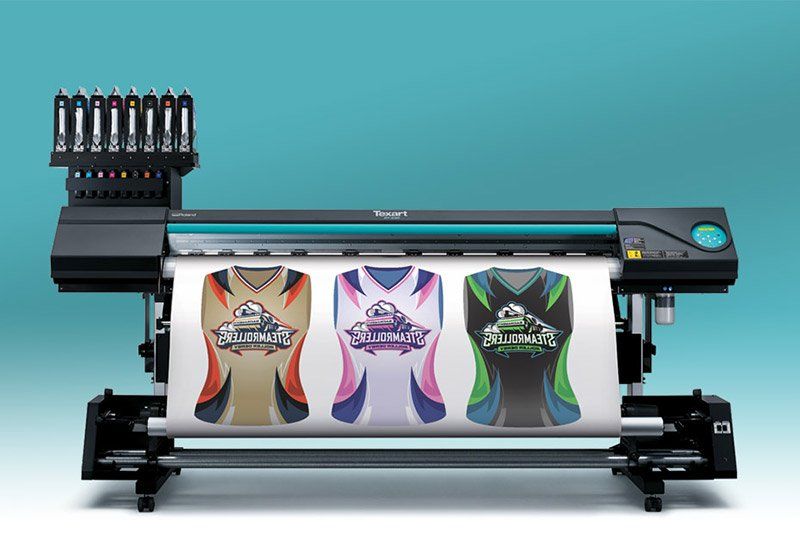


It is more similar in steps to ink transfer, but it is the chemistry that differentiates it from other heat transfer processes.
First, it does not require any binder or adhesives but molecularly bonded.
Secondly, the combination of heat and pressure ignite the sublimation ink and convert it into a gas which then percolates and attaches to polymer or polyester fabrics it comes in contact with.
It then recolors the fibers from inside out, so you won’t feel the ink since they are not on the substrate’s surface.
This result in a permanent coloration with a high resolution and clarity and will be perfectly intact without cracking or fading even after undergoing multiple washing.
The advantage of sublimation that it can be used to decorate plaques, signage, clipboards, photo panels, mugs, awards, mousepads, etc.
However, it only works on surfaces that are polymer-based which means some form of polyester in the case of apparel.
Its start-up and imaging cost are very low and is the favorite heat transfer choice of highly skilled photographers.
3 – Heat Transfer Used by Crafters/DIYers
The common heat transfer used by DIYers and crafters is hot pressing iron and heat press.
Heat Press
The Heat Press is a machine mainly designed to imprint a pattern or graphic on a substrate through the application of heat and pressure.
Heat press ranges from manual, semi-automatic and fully automatic and come in different sizes. The right one for the job depends on several factors. (find out how to select the right heat press for your job here).
The cost of this equipment is greatly determined by the quality and number of features you desire. In other words, heat presses with extra features other than the basics tend to be more expensive. The heat presses come in a different design.
The auto-open clam heat press design is the best for beginners as its portable option only requires the least amount of space and an opportunity to multitask with less risk of burning garment.
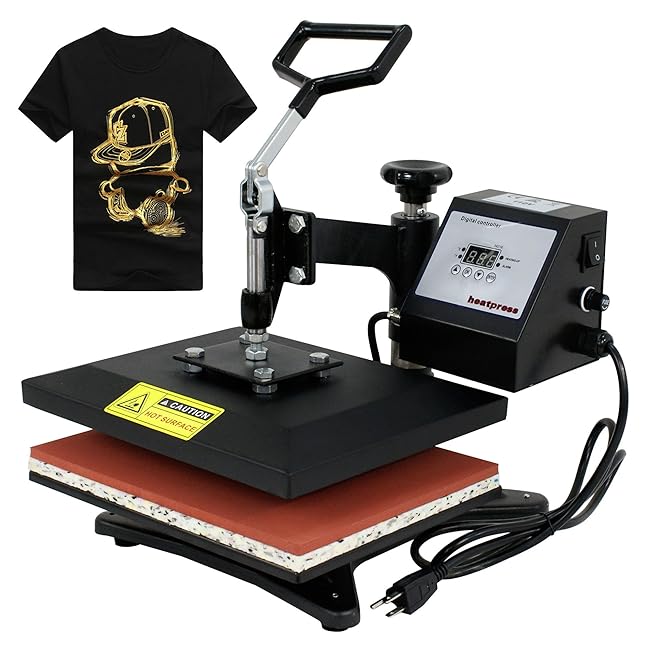


Another type is the swinger/drawer heat press design. This is recommended for experienced heat printers as it produces a high volume of work but takes more space than its auto open clam siblings. It gives you the ability to thread garments on or off the platen in a heat-free workspace.
The air swinger/drawer heat press helps reduce fatigue via the use of compressed air though it is the most expensive but the best for high-volume businesses and provides a heat-free workspace.
While heat presses are usually used to apply designs to fabrics, specially made presses can also be used to imprint designs on plates, cap, mugs and other products.
Hot Iron
On the other hand, the use of hot iron for heat transfer is also an effective method. It is cheaper since it is a worthy substitute for heat press.
However, it is only suitable for small jobs and not for large or commercial purposes, so they are mostly used by DIYers and hobbyists for home use.
Basic Steps to Do Heat Printing at Home
Starting a printing business from your abode? I strongly believe you wouldn’t want to get it wrong. So, here are the basic steps you need to follow to be on the right pedestal.
1. Equipment and Materials
Opting for heat transfer printing requires a machine uniquely designed for that purpose.
Hence, the use of heat press is highly recommended. It allows you to print large volumes with an easy transfer process and retrieval of item after the transfer is completed.
Unlike the use of printer and hot iron, heat transfer printing through heat press guarantees high-quality as well as colorful prints of realistic photo images.
Transfer Materials (TM): For start-ups, you can choose to get a smooth transfer material that comes in glossy, matte, and sometimes glittering nature. Another one is a flocked heat transfer with soft and fuzzy finish to the print.
The transfer materials to be used should be the one that will allow you to print out your designs and customize it to your satisfaction because different fabric tones attract different transfer materials.
2. Creating Your Design
There are numerous computer software packages for creating designs, but it is advisable to use the one you are most convenient with. These are usually free, but some do require a special printer of the same brand.
You can create your design on a paper before turning to the computer software in order to make it easier for you.
You also have the option of scanning the design into the program to be printed onto the transfer materials.
Having completed the design, the printing of the transfer material is the next step, and this could be done with a standard printer or special printers for some special transfer materials.
3. Cutting Your Transfer
Even while operating from home, professionalism is essential.
So, having printed the transfer, you need to cut the design with the aid of ‘cutting mat’ to avoid margin error, and this must be preceded by securing the transfer material.
A craft knife can be used to cut away the excesses on the transfer material. An alternative to craft knife is the use of scissors, but the snag is that it might not perfectly get rid of the excess as opposed to the craft knife.
4. Pressing the Transfer Material
An iron or heat press can be used to press onto the transfer to the substrate. Let’s take a look at the processes involved in using either of the options.
Iron: To generate heat, plug your iron into the wall socket and turn the knob on the iron to the maximum level of hotness.
Placing the hot iron directly on the transfer could cause damage to the transfer material and truncate the transfer process.
Therefore, get a towel and place it in between the hot iron and the transfer material, then put your hot iron on the transfer material for the duration of time as stated on the transfer material box.
Having fulfilled the timing, remove the hot iron and allow the transfer to cool off before gently peeling the back of the material as doing otherwise could as well cause damage to the transfer.
Heat Press: To effectively use a heat press, it is necessary to plug your heat press machine into the wall socket and set the temperature to a level as stated on the transfer material box. Then determine the thickness of the substrate and adjust the pressure of the machine to its suitability.


Do not be in haste to place the item in the machine but ensure you set the timer based on the transfer materials you want to use as also stated on the transfer material box.
Having done this, you can then place the item in the heat press and close it. The beauty of the automatic heat press is that upon completion of the transfer process, the machine opens automatically.
After heat pressing the design, allow it to cool off and gently peel off the paper backing. Allow the print to lock for about 24 hours before you can wash the fabric.
Heat Transfer Printing Tips
- Always test the transfer by printing on a regular piece of paper before to print on your garments, this will help to avoid error and wasting of money.
- Before you heat-press, make sure you pre-treat the garment that requires pre-treatment. You can even pre-heat the cloth for some seconds (without applying the transfer paper) to remove creases and moisture.
- Select the right fabric. Make sure you check the fabric you want to print onto and ensure it can withstand the heat before you proceed.
- Pre-wash items like t-shirts that will need washing afterward to avoid weird shrinkage or wrinkles after the first wash.
- Make sure you load the garment properly into the heat press machine before you proceed.
Conclusion
I hope this article has opened your eyes to heat transfer printing – what it is, how to heat print, the equipment needed, and the necessary things you need to know to achieve a great result? Kindly share if you found this resource helpful.
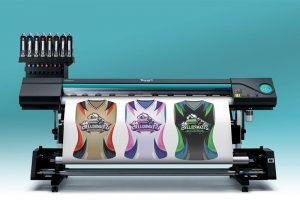


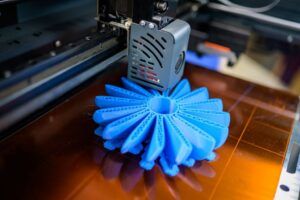
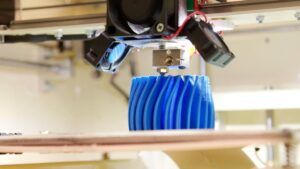

wow! great i thank for your site, am interest on how to purchase any of the items, is it in USD, and how it can ship to Solomon Islands,
great product especially for home.
thanks